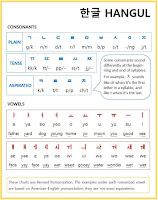Armywanderers!!
We are excited to finally release our first tour package with tips and guides to our first destination, South Korea. Of course, we had to start with the home of BTS. As ARMY, we all want to take a trip to South Korea. We want to eat delicious Korean cuisine, drink soju (소주), sing at a noraebang (노래방). We want to visit the locations of their music videos, photo shoots, and where they filmed Run! We want to see their home towns, walk in their footsteps.
There's so much information we want to share with you that we are dedicating the month of January to South Korea! In this first blog, we will be giving you some background information, facts and a bit of history you should know.
Hope you enjoy it...
 |
| Flag of South Korea |
Seoul (서울시) half of the country's population of more than 51 million people live within the Seoul metropolitan area, this includes Ilsan (일산시) and Gwacheon (과천시).
Ilsan is a planned city on Line 3 of the Seoul Metropolitan Subway. Ilsan has the largest artificial lake in Asia, Lake Park, which covers 72.9 acres.
Gwacheon is also on the Seoul Metropolitan Subway, Line 4. It is so close to Seoul that several attractions attributed to Seoul are actually in Gwacheon like Seoul Grand Park, National Museum of Contemporary Art, Seoul Land, Gwacheon National Science Museum.
Busan (부산시) is the second largest city in South Korea, with a population of around 3.4 million people. The port of Busan is the busiest in Korea and the fifth busiest in the world.
Daegu (대구시) is the fourth biggest city, with a population of over 2.5 million people. Daegu is known as 'Apple City' because it's climate is perfect for growing apples.
Gwangju (광주시) is the sixth largest city in South Korea, with a population of around 1.5 million people. Gwangju is the combination of two words 'gwang' (광) which means 'light' and ju (주) which means 'province'.
Language:
 | |
| The Korean Alphabet |
There are also regional dialects called satoori.
Hangul was created in the mid fifteenth century by King Sejong and is considered to be the most logical and easiest alphabets to learn.
English is widely spoken in South Korea, but you should learn a couple of words and phrases in Korean out of respect, Koreans really appreciate it.
 |
| South Korean Won ₩ |
- Banknotes:
₩1,000, ₩5,000, ₩10,000, ₩50,000 - Coins:
₩10, ₩50, ₩100, ₩500
Climate: Temperate, it rains more in the summer. Monsoon season is from July through Mid-September. Winter is very cold and dry, and it does snow.
History Timeline
2333 BCE - Foundation of Joseon (Gojoseon) by Dangun - Gojoseon explands to the Korean Peninsula
108 BCE - Han dynasty defeats Wiman Joseon
“Proto - Three Kingdoms of Korea” time - Goguryeo, Baekje and Silla as the three kingdoms.
Goguryeo is the most powerful and lasts 700 years
676 - Unification of the Three Kingdoms by Silla
8th and 9th century - Silla becomes more powerful,
creating overseas communities and having the fourth largest city in the world (Gyeongju).
Buddhism gains more and more importance.
936 - After another separation, the “Later Three Kingdoms” are unified by Wang Geon,
Korea is now called Goryeo
1100 - Many advances in education with 12 universities
13th century - Mongol invasion never conquers Goryeo, but weakens it
mid-14th century - Goryeo drives out the Mongols and regains its northern territories
1392 - coup by General Yi Seong-gye - declares the new name of Korea as “Joseon”
1592 - 1598 - Invasions of Korea by Japan, which was eventually forced to withdraw
18th century - New renaissance of the Joseon dynasty
19th century - Royal in-law families gain control of the government leading to corruption and weakening of the state
1910-45 - After the first Sino-Japanese War and the Russo-Japanese War, Korea is occupied by Japan
End of World War II - Soviets occupy the northern half of Korea, U.S. forces the southern half.
1943 - Plan for a unified Korea in Cairo Declaration -
however, a cold war between the Soviet Union and the U.S. leads to the establishment of two separate governments.
1948 - Division of Korea. Syngman Rhee wins first presidential election in South Korea

Monument in Remembrance of the Korean War 1950 - North Korea invades South Korea - Korean War starts and leads to approximately 3 million deaths
1953 - Armistice, never signed by South Korea - technically both countries are still at war
1960 - Student uprising leads to resignation of the president Syngman Rhee
1961 - Coup led by general Park Chung-hee, criticized as a ruthless military dictator
1979 - Assassination of Park, general Chun Doo-hwan takes control
1987 - June Democracy Movement - Roh Tae-woo (leader of Chun’s political party) wins the presidential election
1991 - South Korea is formally invited to become a member of the United Nations
1997 - Election of Kim Dae-jung, eighth president of South Korea, former political prisoner
2007 - Election of Lee Myung-bak, conservative former mayor of Seoul
2010 - Escalation of attacks by North Korea
2012 - Election of Park Geun-hye, first ever female president
2016 - Massive public demonstrations lead to impeachment and dismissal of Park
2017 - Election of Moon Jae-in from the democratic party
If you want to read more about the history of South Korea we recommend you check out this list of books on Goodreads:
Most of these books are non-fiction but there are some novels on this list.
Part two of our South Korea package contains all the important travel information you will need to help you plan your trip and what you need to know when you finally get there.
If you have any questions please comment below...







No comments:
Post a Comment